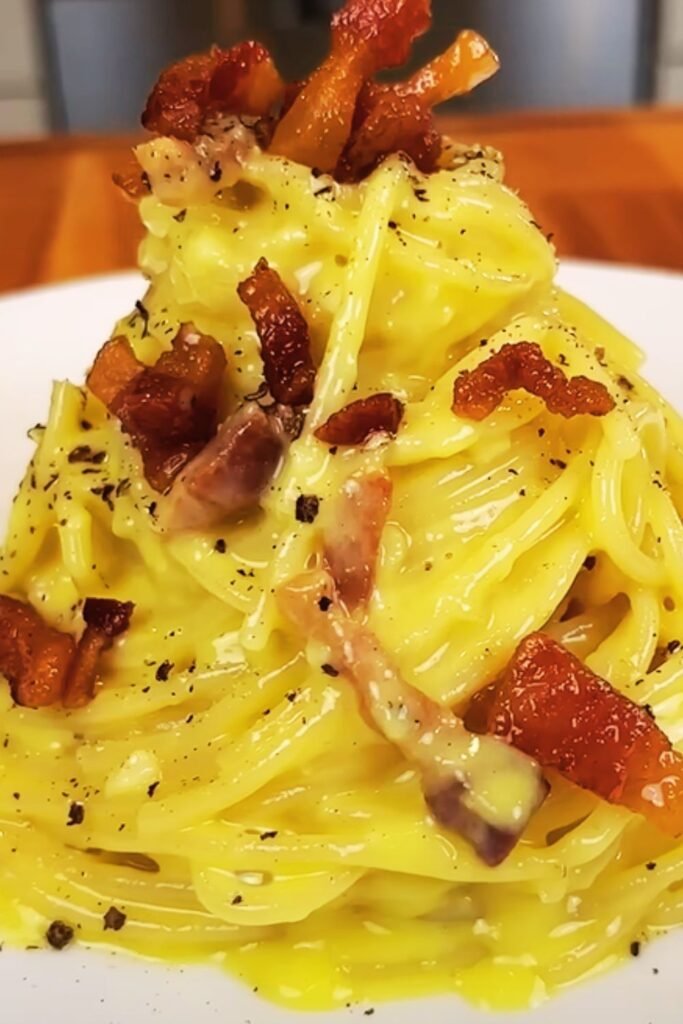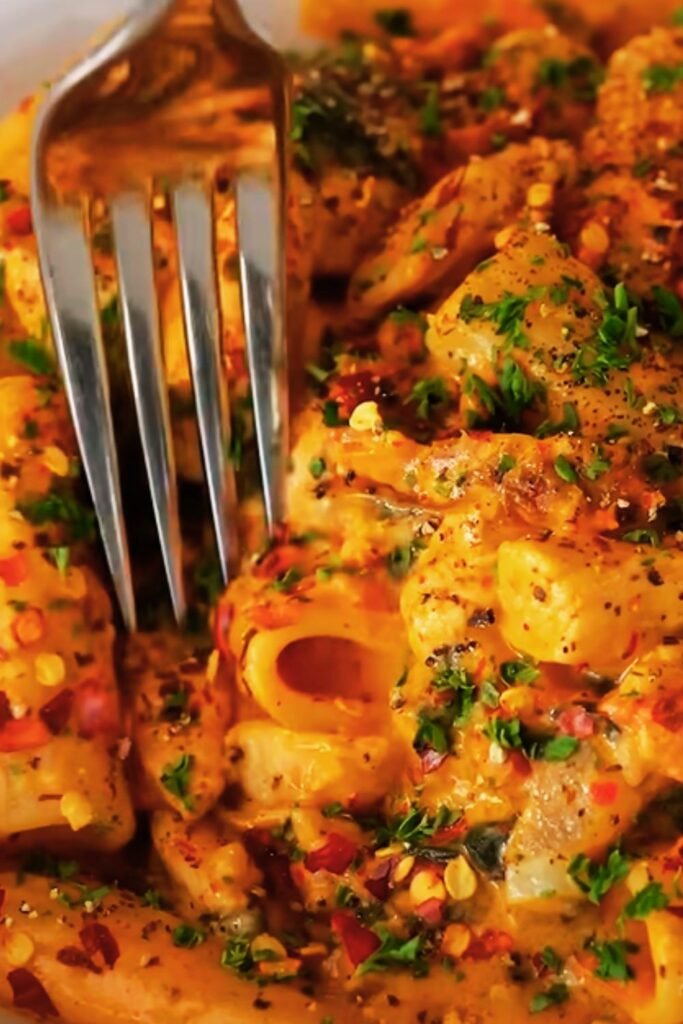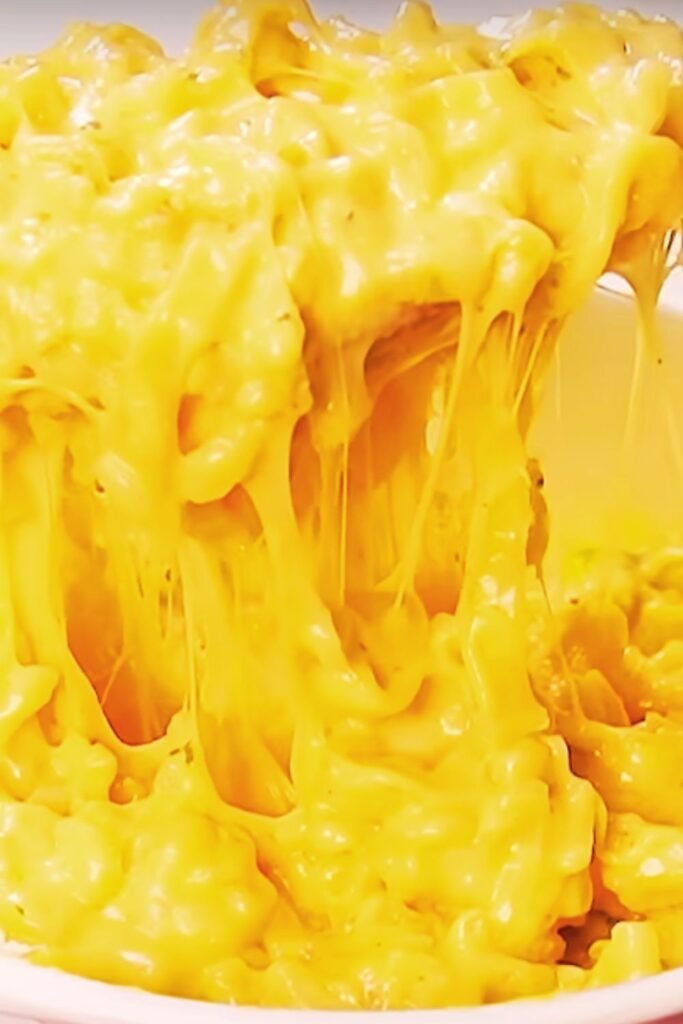When I first arrived in Rome years ago, I had one culinary mission: to find the most authentic, mind-blowing carbonara in the Eternal City. Little did I know this creamy, peppery pasta would become my obsession, leading me through winding cobblestone streets and into family-run trattorias that have perfected this iconic dish over generations.
If you’re planning a trip to Rome or simply want to recreate the magic of authentic carbonara at home, you’re in the right place. I’ve eaten my way through countless plates of this beloved Roman classic to bring you the definitive guide to the best carbonara in Rome, plus a foolproof recipe that captures the essence of this deceptively simple masterpiece.
What Makes Authentic Roman Carbonara Special?
Before diving into the best restaurants, let’s understand what makes a true Roman carbonara so special. Authentic carbonara contains just five ingredients: pasta (typically spaghetti or rigatoni), guanciale (cured pork jowl), eggs, Pecorino Romano cheese, and black pepper. That’s it.
What you won’t find in authentic carbonara:
- No cream
- No garlic
- No onions
- No peas
- No pancetta or bacon (though these are common substitutes outside Italy)
The magic happens when hot pasta is tossed with rendered guanciale fat, then quickly mixed with beaten eggs and cheese, creating a silky sauce that clings to each strand of pasta. The residual heat from the pasta cooks the eggs just enough to create a creamy consistency without scrambling them – a technique that requires precision and practice.
The Best Carbonara in Rome: My Top 5 Picks
After countless meals and many heated debates with locals, here are my picks for the absolute best places to experience true Roman carbonara:
1. Da Danilo
Location: Via Petrarca 13, Esquilino neighborhood Price: €€ Why it’s special: Da Danilo’s carbonara achieves the perfect balance between silky and rich. Their guanciale is cut slightly thicker than most, giving wonderful texture to each bite. The family that runs this place treats you like one of their own.

The restaurant itself feels like stepping into someone’s home – warm, unpretentious, and always packed with locals (always a good sign). Make a reservation at least a week in advance or prepare to wait.
2. Roscioli
Location: Via dei Giubbonari 21, near Campo de’ Fiori Price: €€€ Why it’s special: Part deli, part restaurant, Roscioli elevates carbonara to an art form. They’re known for their exceptional ingredients, including three different ages of Pecorino cheese and premium guanciale from Amatrice. The pasta is cooked to that perfect al dente consistency that only Italians seem to truly master.
The atmosphere is sophisticated yet welcoming, making it perfect for a special meal. Their wine list is equally impressive if you’re looking to pair your carbonara with something special.
3. Armando al Pantheon
Location: Salita de’ Crescenzi 31, right by the Pantheon Price: €€ Why it’s special: Operating since 1961, Armando serves perhaps the most traditional version of carbonara in my lineup. The sauce achieves that elusive “wave” consistency – not too dry, not too wet. The generous dusting of freshly ground black pepper adds the perfect pungent kick.
Being just steps from the Pantheon means it’s popular with tourists, but the quality remains impeccable. The intimate dining room has only about 15 tables, so reservations are essential.
4. Flavio al Velavevodetto
Location: Via di Monte Testaccio 97, Testaccio neighborhood Price: €€ Why it’s special: Built into Monte Testaccio (an ancient Roman waste mound made of pottery fragments), this restaurant serves carbonara that’s beloved by Romans. Their version features perfectly crispy guanciale that maintains its texture even when mixed with the egg sauce. The portion size is gloriously generous, too.
The Testaccio neighborhood is off the typical tourist path, giving you a more authentic dining experience surrounded by locals.
5. Trattoria Da Cesare al Casaletto
Location: Via del Casaletto 45, Monteverde neighborhood Price: € Why it’s special: Worth the journey to this residential neighborhood, Da Cesare’s carbonara has an intensely pepper-forward flavor profile that showcases the simplicity of the dish. They use rigatoni rather than spaghetti, which captures the sauce beautifully in each tube of pasta.
This is the most affordable option on my list, proving that excellent carbonara doesn’t have to break the bank. The relaxed, family-friendly atmosphere makes it perfect for a long, leisurely lunch.
The Carbonara Debate: Regional Variations
While in Rome, I discovered that carbonara inspires passionate debate among Italians. Even within the city, slight variations exist:
| Region/Style | Pasta Type | Cheese | Meat | Egg Part | Special Technique |
|---|---|---|---|---|---|
| Classic Roman | Spaghetti | Pecorino Romano only | Guanciale | Whole eggs | Pasta water to control consistency |
| Northern Influence | Rigatoni | Blend of Pecorino and Parmigiano | Guanciale | Mostly yolks | More black pepper |
| Modern Roman | Tonnarelli | Aged Pecorino | Guanciale (thicker cut) | Equal parts whole eggs and yolks | Cooling pasta slightly before adding egg |
| Countryside | Bucatini | Young Pecorino | Pancetta | Whole eggs | Adding rendered fat to eggs before mixing |
| American-Italian | Fettuccine | Parmesan | Bacon | Whole eggs | Often adds cream and garlic |
Romans are generally unified on one point: authentic carbonara never contains cream. The creamy texture should come solely from the emulsion of eggs, cheese, and starchy pasta water.
How to Eat Carbonara Like a Roman
When in Rome, embrace these local customs for the full carbonara experience:
- Timing matters: Carbonara is traditionally a lunch dish in Rome, though restaurants serve it at dinner for tourists.
- Pasta shape: Don’t be surprised if your carbonara comes with rigatoni instead of spaghetti—both are authentic Roman choices.
- Temperature: Eat carbonara immediately when served. The perfect consistency is fleeting as the sauce continues to thicken as it cools.
- Pairing: While wine is traditional, many Romans enjoy carbonara with a cold beer or sparkling water to cut through the richness.
- Pace: Romans take their time with meals. Carbonara isn’t fast food—it should be savored slowly.
My Authentic Roman Carbonara Recipe
After learning from chefs across Rome, here’s my tried-and-true recipe that captures the essence of authentic Roman carbonara while being doable in a home kitchen outside Italy.
Ingredients (serves 4):
- 400g (14oz) spaghetti or rigatoni
- 150g (5.3oz) guanciale (substitute with pancetta if unavailable)
- 4 whole eggs (at room temperature)
- 100g (3.5oz) Pecorino Romano, finely grated
- Freshly ground black pepper (about 2 teaspoons)
- Salt for pasta water
Equipment:
- Large pot for pasta
- Large frying pan for guanciale
- Mixing bowl for eggs and cheese
- Tongs for handling pasta
- Wooden spoon for mixing
Step-by-Step Instructions:
- Prep the guanciale: Cut the guanciale into small cubes or short strips about 1/4 inch thick. If using pancetta, it should be cut slightly thinner.
- Prepare the egg mixture: In a large bowl, whisk together the eggs and about 3/4 of the grated Pecorino Romano (save the rest for garnishing). Add a generous amount of freshly ground black pepper—more than you think you need! Whisk until well combined and set aside at room temperature.
- Cook the pasta: Bring a large pot of water to a boil. Add salt (about 1 tablespoon) and cook the pasta until al dente according to package instructions, usually 8-10 minutes. Before draining, reserve about 1 cup of the starchy pasta water.
- Render the guanciale: While the pasta cooks, add the guanciale to a cold, large frying pan and turn the heat to medium-low. Cook slowly until the fat renders and the guanciale becomes crispy but not burnt, about 8-10 minutes. No additional oil is needed as the guanciale will release plenty of fat.
- Remove excess fat: Once crispy, turn off the heat. You can remove about half of the rendered fat if desired (though many Romans keep it all for flavor).
- Combine: When the pasta is done, drain it (reserving some water as mentioned) and immediately add it to the pan with the guanciale. Toss well to coat the pasta with the fat. Remove the pan from the heat and let it cool for 30 seconds to ensure the eggs won’t scramble.
- Create the sauce: Working quickly, pour the egg and cheese mixture into the pasta, tossing constantly with tongs or a wooden spoon. The residual heat will cook the eggs just enough to create a creamy sauce. If the sauce seems too thick, add a splash of the reserved pasta water to loosen it up.
- Serve immediately: Divide among warm plates and top with the remaining Pecorino Romano and another grind of black pepper.

Common Mistakes to Avoid:
- Scrambled eggs: If your pan is too hot when adding the egg mixture, you’ll end up with scrambled eggs instead of a silky sauce. Always remove the pan from heat and let it cool briefly before adding eggs.
- Undercooked eggs: Conversely, if your pasta has cooled too much, the eggs won’t cook at all, resulting in a raw, runny sauce. The pasta needs to be hot, but not scalding.
- Using pre-grated cheese: Pre-grated cheese often contains anti-caking agents that prevent it from melting properly. Always grate your cheese fresh.
- Not eating immediately: Carbonara waits for no one! Serve and eat it right away for the best texture.
Serving Suggestions
Carbonara is typically served as a primo (first course) in Italy, rather than a main dish. Here’s how to create a complete Roman meal experience at home:
Before carbonara:
- Bruschetta al pomodoro (toasted bread with fresh tomatoes)
- Supplì (Roman rice balls with mozzarella center)
- A simple antipasti plate with olives and local cheeses
After carbonara:
- Saltimbocca alla Romana (veal with prosciutto and sage)
- Carciofi alla Romana (Roman-style artichokes)
- A simple green salad dressed with olive oil and lemon
To finish:
- Fresh seasonal fruit
- Tiramisu or panna cotta

Carbonara Variations for Special Diets
While purists might object, here are some adaptations for those with dietary restrictions who still want to experience the essence of carbonara:
Vegetarian Carbonara
Replace guanciale with:
- Smoked mushrooms (porcini or shiitake work well)
- Sundried tomatoes for umami
- A drizzle of good olive oil for richness
The egg and cheese components remain the same.
Dairy-Free Option
Replace Pecorino with:
- Nutritional yeast mixed with a bit of miso paste for depth
- Dairy-free parmesan alternatives (cashew-based ones work best)
You’ll need to add a bit of salt to compensate for the less salty cheese substitute.
Gluten-Free Carbonara
Simply substitute with:
- High-quality gluten-free pasta (corn and rice blends work best)
- Cook the pasta slightly less than package instructions for better texture
All other components remain authentic.
Q&A: Common Carbonara Questions
Q: Why did my carbonara sauce turn into scrambled eggs? The pan was likely too hot when you added the egg mixture. Next time, remove the pan from heat and let it cool for 30-60 seconds before adding the eggs. Keep tossing constantly to distribute the heat evenly.
Q: Can I make carbonara ahead of time? No, carbonara is one dish that must be made and served immediately. The sauce consistency changes dramatically as it cools, and reheating often results in scrambled eggs.
Q: Is adding cream to carbonara really that bad? From a Roman perspective, yes! Adding cream fundamentally changes the dish. The creaminess should come from the emulsion of eggs and cheese. That said, cook what you enjoy—just don’t call a cream-based version “authentic Roman carbonara.”
Q: What can I substitute for guanciale outside of Italy? Your best substitutes, in order of preference: pancetta, unsmoked bacon, or smoked bacon with the smoky outer layer removed. Each will give a different flavor, but pancetta comes closest.
Q: My sauce is too thick/thin. How do I fix it? If too thick, add small splashes of reserved pasta water while tossing. If too thin, add a bit more grated cheese. The sauce will naturally thicken as it cools as well.
Q: Can I use another cheese besides Pecorino Romano? Purists say no, but Parmigiano-Reggiano is the most common substitute. It’s milder and less salty than Pecorino, so you might need to adjust seasoning.
The History Behind Carbonara
Surprisingly, carbonara is relatively modern by Italian standards. While its exact origins are debated, most food historians agree it gained popularity in Rome after World War II.
The most compelling theory suggests American soldiers stationed in Italy brought their breakfast rations of bacon and eggs, which local cooks incorporated into pasta dishes. Others believe it originated with charcoal workers (carbonai) who needed a hearty, portable meal.
Regardless of its origins, carbonara has become one of the most iconic dishes of Roman cuisine, alongside amatriciana, cacio e pepe, and gricia (often called carbonara’s predecessor, as it’s essentially carbonara without eggs).
Final Thoughts: The Soul of Roman Cooking
What I love most about carbonara is how it embodies the Roman cooking philosophy: simple ingredients transformed through technique rather than complexity. With just five ingredients, it creates a dish greater than the sum of its parts.
Whether you’re planning to hunt down the best carbonara in Rome’s winding streets or attempting to recreate the magic at home, remember that patience and quality ingredients are your best friends. There’s something deeply satisfying about mastering this seemingly simple yet technically challenging dish.
And if your first attempt isn’t perfect? That’s just another reason to visit Rome and taste the real thing for yourself.
Your Carbonara Journey
Have you tried making carbonara at home? Or have you discovered an amazing carbonara spot in Rome that didn’t make my list? I’d love to hear about your experiences in the comments below.
Buon appetito!